El Lisitzky, known as The Lisitzky, pseudonym of Eleazar or Lazar Markovich Lisitzky (adopted by him in search of his artistic identity), was born on November 23 of 1890 in Russia into a Hebrew bourgeois family. was a Russian painter, typographer, designer and architect, one of the leading representatives of abstract art and pioneer of Constructivism. He was born in Smoliensk, Russia. He began his career illustrating children’s books in Yiddish (Judeo-German) to promote Jewish culture. After being rejected in 1909 by the Academy of Art of St. Petersburg despite having passed (the law in the time of Tsarist Russia allowed only a limited number of Jews in schools and universities) he went to Germany where he studied architecture and traveled throughout Europe (especially through France and Italy) but the outbreak of World War I brought him back to his country. He studied engineering at the Darmstadt Technical College from 1909 to 1914, under the tutelage of Joseph Olbrich, and later architecture in Moscow. In 1919 he was appointed professor of Architecture and Graphic Design at the Vitebsk Art School, led by Marc Chagall. In 1919 he met the painter Kazimir Malievich, immediately identified himself with the constructivist movement (style of basic shapes and pure color rejecting figurative representation), that same year Lissitzky made his paintings Proun, an intermediate step between architecture, painting and sculpture where he experimented with geometric shapes, arrhythmias and asymmetry in composition with the intention of breaking with the two-dimensional character common in the works. A
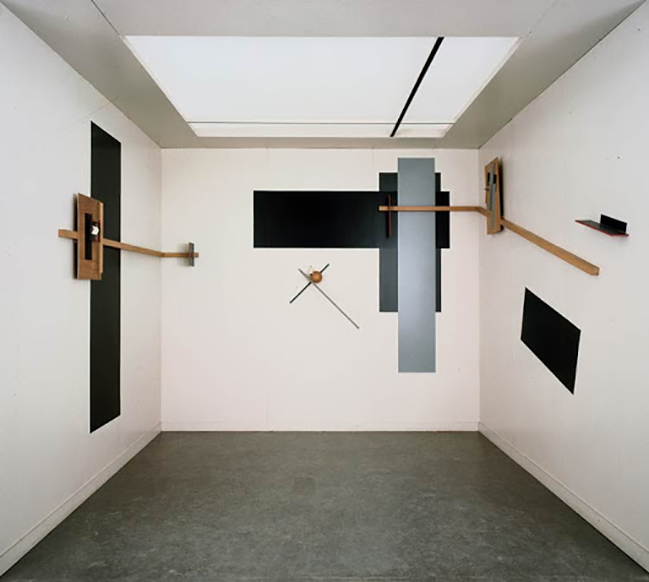
It is at this time, with the Russian Revolution and the aim of supplanting the capitalist system by more democratic schemes and achieving an egalitarian society, that El Lisitzky performed his most famous work, Hit the whites with the red wedge, 1919. In this work you are introduced to a powerful red triangle inserting itself into the white circular space. This image is a metaphor for the upheaval in Russia in the early part of the 20th century. Geometric forms and simplified palette become mainstays throughout his artistic career.
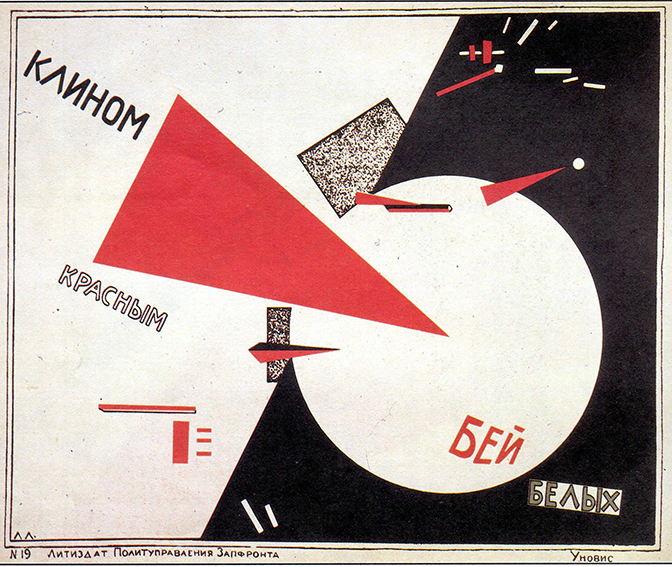
Jewish themes and symbols sometimes appeared in their “Proun”, by composing Hebrew letters as part of visual code in a dynamic design.
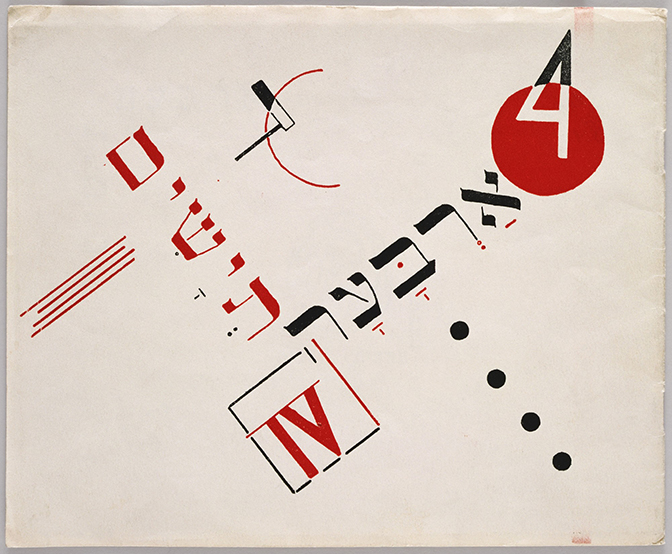
Already in this work the poster is understood as a public object conceived for masivity so El Lissitzky, by using geometric elements instead of figurative elements establishes a new formal language that allows the reception to be immediate: the “red army” (the Communists), represented by a red wedge, appear at war with the “white army” (conservative and monarchical) represented by a white circle. With this work, El Lisitzky would realize the constructivist ideal that would have such an impact on the world of design: “The use of diagonals, use of red and black (colors of the Revolution) contrasted on a white background or the use of simple and pure geometric shapes, are the main tools he used in his different propaganda posters to attract attention and remain in memory (main objective of the poster and advertising)”.
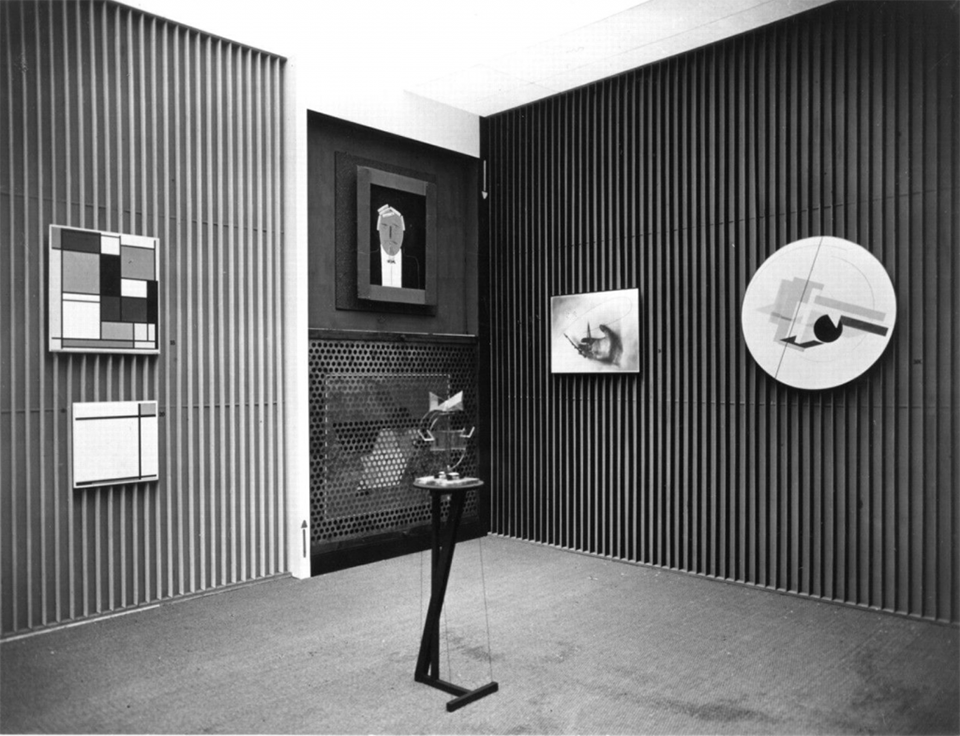
On returning to Russia, he collaborated with INCHUK(Utverditeli Novogo Iskusstva: “The Defenders of New Art”) being appointed in 1921 as a professor at the Moscow State Art School. But in the same year he returns to Germany, where he relates to Moholy-Nagy. He subsequently moved to Western Europe to disseminate the ideas of the Russian avant-garde during the period 1922-1931.
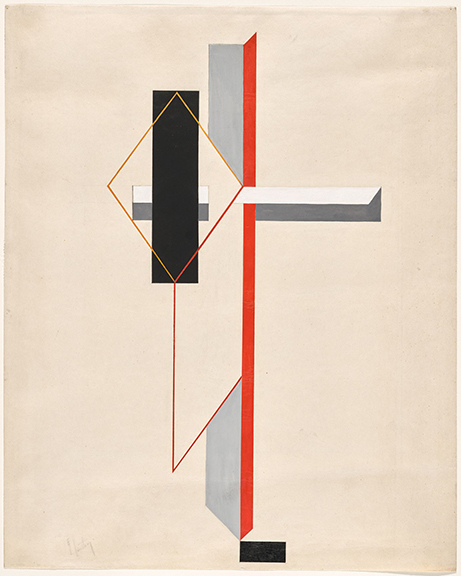
While it is true that the compositional and expressive release of typography (understood as one more element of visual design), along with colour and form already appeared in Futurism (which together with Cubism strongly influenced Constructivism), the Russian Revolution when this movement acquired a strong political and social burden that led to the dissemination of works to society (whether painting, sculpture or architecture) and the rejection of “art by art”. The artist understood himself as a builder of a new order and as an influential medium within society. Art had to be propaganda outwards and the viewer had to be active in the face of the work. With these ideals, the Soviet government offered its official support for new Russian art and considered El Lissitzky a cultural representative, so he moved to Berlin, where in addition to working as a writer and cartoonist for various international magazines and newspapers he helped promote and disseminate the Russian avant-garde through various exhibitions in art galleries.
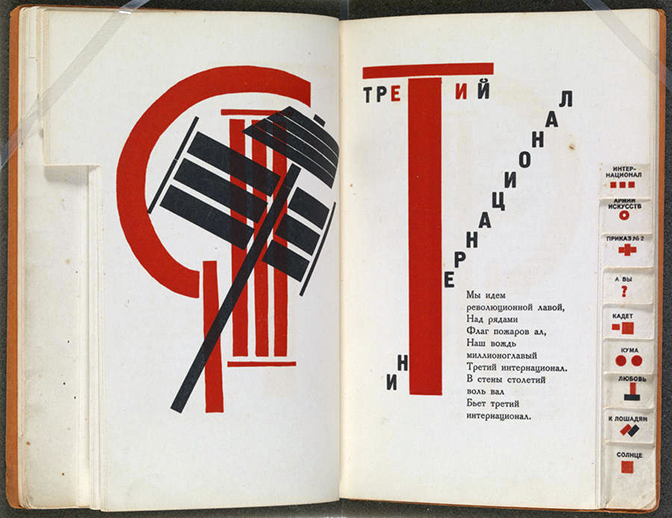
Among the works of this period is his work for the book Dlia Golossa (“For the Voice”), a collection of poems by Vladimir Mayakovsky where he already understood the book as a dynamic object, a “unit of acoustics and optics” that required the active participation of the viewer, making with his illustration’s authentic visual poems.
At the 1923 Berlin exhibition he met the members of Stijl’s group, including his main driving force, Theo van Doesburg, becoming an influential character in the abstract movement. In 1923, together with Gerhard Richter and László Moholy-Nagy joined the constructivist group. Together with them he influenced professional graphic design, not only in the Soviet Union but also in the Western world and influenced with his theories in the Bauhaus.
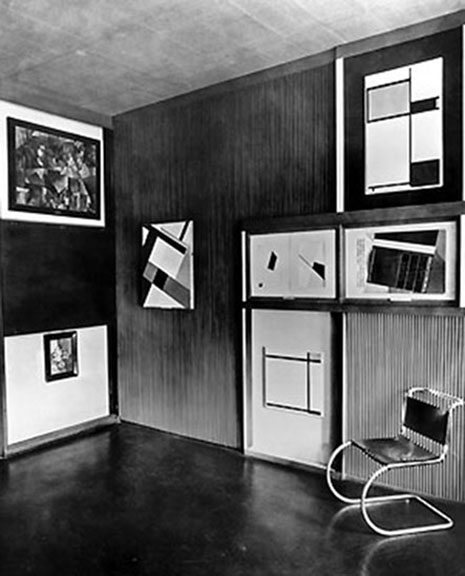
In 1925 he published, in collaboration with H. Arp, the work: The Ismes of art. Through Moholy-Nagy he exerted great influence on the Bauhaus. He was invited to Hanover by the Kestner Society, where he remained from 1925 to 1928, and he mounted the famous “Abstract Cabinet”, destroyed by the Nazis and rebuilt in 1968.
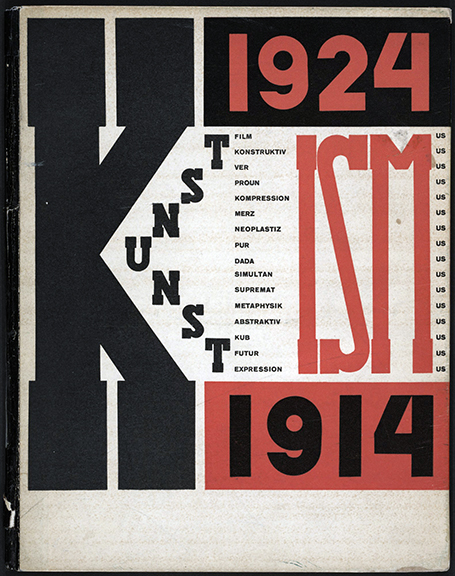
(The Isms of Art 1914–1924) 1925
His relationship with the German school culminated in 1931, with the Bauhaus exhibition in Moscow, which unfortunately reflected the conflicts that his community lived in.
After being diagnosed with pulmonary tuberculosis (a disease that would cause his death) he went to Switzerland for treatment. However, his illness did not prevent him from continuing to work and during this period he devoted himself to typography designs and advertisements for Pelikan.
In 1925 he returned to Moscow and continued until his death with his activity within the graphic, architectural, advertising, theatrical and cinematic field.
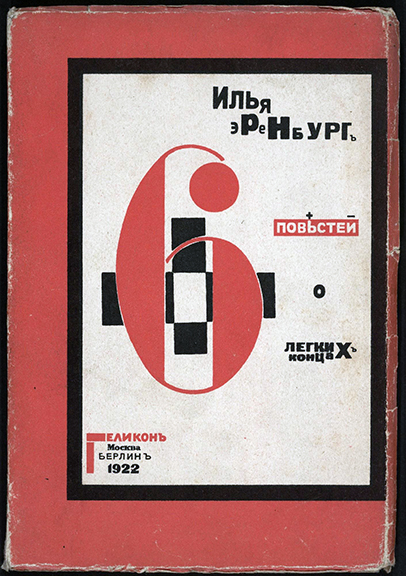
His sharp contrasts of sizes, shapes and limited use of color along with typography and collage photographs in diagonal composition had a huge impact on a whole generation of European artists. (We have seen it both in Joan Brossa’s conceptual graphic poetry, Japanese design and even in current designers such as Reza Abedini). In short, an integral artist who knew how to reflect the conceptual and social transformations of his historical moment by creating a language and establishing the basic principles of 20th-century design. He died in Moscow in 1941.
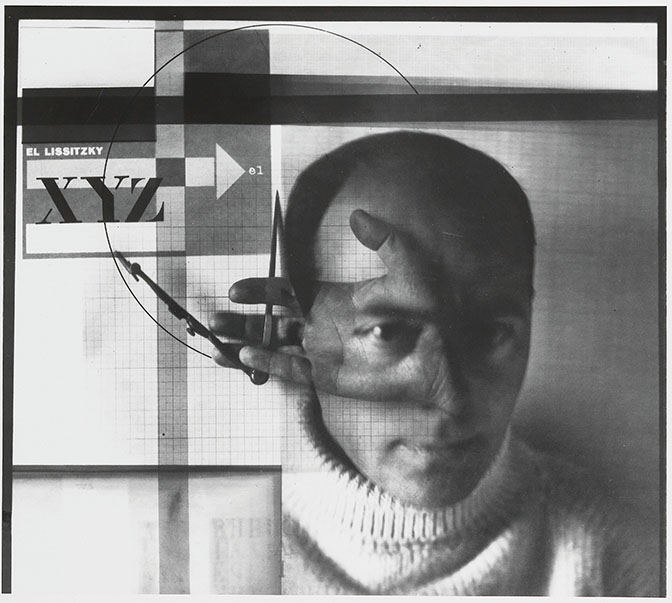
For additional information on the art and practice of El Lissitsky, please visit:
Museo Nacional Thyssen-Bornemisza – https://www.museothyssen.org/coleccion/artistas/lissitzky
Proyecto IDIS – https://proyectoidis.org/el-lissitzky/
MOMA – https://www.moma.org/artists/3569
TATE Museum – https://www.tate.org.uk/art/artists/el-lissitzky-1519
Design History – http://www.designishistory.com/1920/el-lissitzky/
Writing by Maria Cruz Uceda. Maria was born and raised in Madrid, Spain. Currently, Cruz Uceda studies graphic design and photography, is a member of USF’s women’s basketball team, and has an epic fascination with urban culture (art, fashion, and music). This spring 2021, Maria will present a series of interactive and printed design works as part of her senior thesis. The content is focused upon a branding project for an area company, Thomas Coffee.


